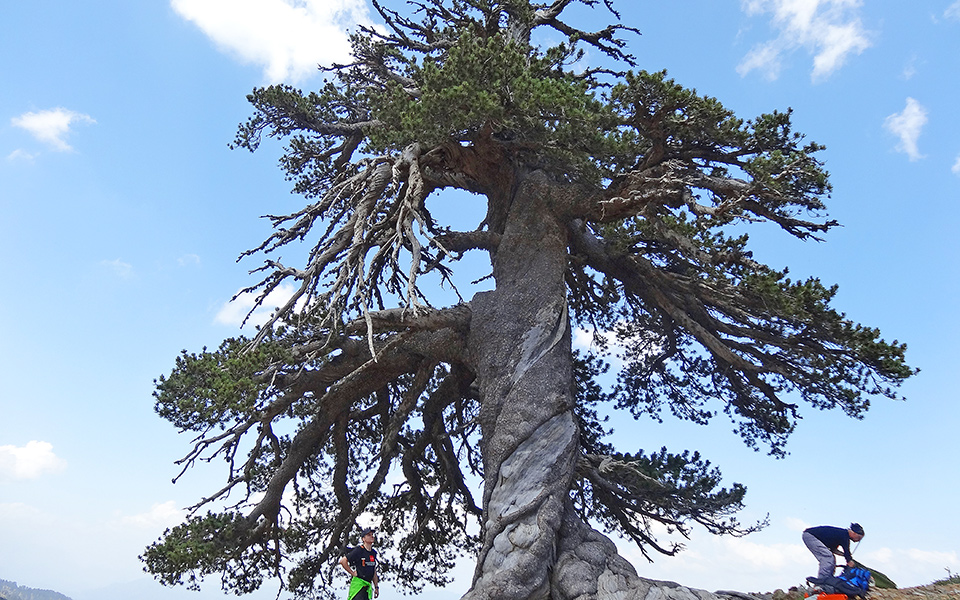Firmly rooted in a hill in the Pindos mountain range since the Byzantine era, the Vitiligo pine has managed to survive for at least 1,075 years and holds the impressive record of being the oldest living tree in Europe. But the pine, discovered by scientists from the Universities of Stockholm, Mainz and Arizona during a mission by the Navarino Environmental Observatory (NEO), does not attract the interest of researchers just for its age.
“The discovery was accidental. Our group was looking for trees in the area with at least 500 rings in the trunk. Each year, trees add a layer of wood in the trunk, forming an additional ring,” explains George Maneas, station manager of the NEO.
The study of the 1,075 rings of the Pindos tree is ongoing and Paul Krusic, researcher at the University of Stockholm, is playing a central role.
“The life story of trees as old as this can give us an accurate picture of the environmental changes that have occurred in the past, enlightening us in our attempts to draw conclusions about climate change and the impact of humans on it, ” he says.
“The forest where it was found is unique not only for the ancient trees found there, but also because of the microclimate of the area (cold and dry). The old trees which fall don’t rot immediately, providing important information for researchers.”
If you want to see the tree up close, you’re out of luck.
The only detail that has been released about “Adonis”, as the NEO researchers call the tree, is that the point where it grows is found at a high altitude.
This is because, they believe, it’s best for the tree to be left in peace.
”It’s likely for the ecosystem to suddenly come under enormous pressure due to the excessive number of visitors,” says Maneas.
”The goal is to protect it, since this particular tree has been alive for no less than 11 centuries, undisturbed by human presence.”












